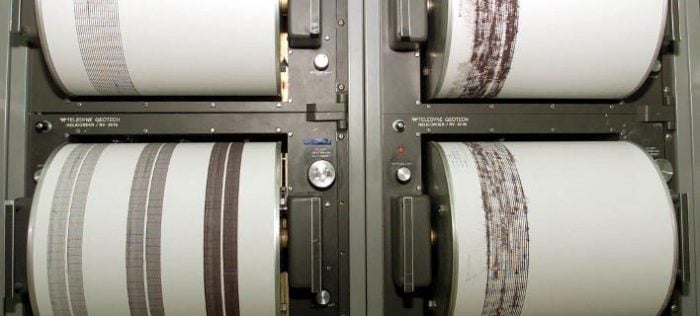 The central Greek region of Elassona, near Larissa, was hit by an earthquake measuring 5.5 on the Richter scale just before 3:00 PM on Friday, nine days after a powerful 6.3 quake was recorded in the same region.
The central Greek region of Elassona, near Larissa, was hit by an earthquake measuring 5.5 on the Richter scale just before 3:00 PM on Friday, nine days after a powerful 6.3 quake was recorded in the same region.
No injuries have been reported, and officials have announced that there is no cause for concern in the area.
They urge citizens to remain outside of their homes for now, however, as a precautionary measure.
The depth of Friday’s earthquake, according to figures from Greece’s Institute of Geodynamics, reached 8.5 kilometers into the Earth.
Shortly following the initial quake, a series of smaller seismic events, measuring 3.7, 3.6, and 3.9 on the Richter scale, were felt in the same area.
Last week’s earthquake caused widespread damage in the area
Several buildings collapsed as an earthquake measuring 6.3 on the Richter scale shook central Greece at 12:16 PM local time on Wednesday. There are no reports of injuries.
The tremor struck 121 km (75 miles) SW of Thessaloníki near the town of Elassona in the region of Larissa.
Its focal depth was 10 km (6 miles).
The worst hit village in the area was Mesohori, near Elassona, where the local church and some old houses were badly damaged.
The earthquake was felt in Larissa, Trikala, Kozani and Thessaloniki.
Greece’s many seismic events
Greece lies in a highly seismically active region. The vast majority of earthquakes cause no damage or injuries.
Last October, an earthquake that struck the eastern Greek Aegean island of Samos and the nearby Turkish coast killed two people on Samos and at least 75 people in Turkey.
The country is located in a complex boundary zone in the eastern Mediterranean between the African Plate and the Eurasian Plate.
The northern part of Greece lies on the Eurasian Plate while the southern part lies on the Aegean Sea Plate.
The Aegean Sea Plate is moving southwestward with respect to the Eurasian Plate at about 30 mm per year while the African Plate is subducting northward, beneath the Aegean Sea Plate, at a rate of about 40 mm per year.
The northern plate boundary is a relatively diffuse divergent boundary while the southern convergent boundary forms the Hellenic arc.
These two plate boundaries give rise to two contrasting tectonic styles, extension on east–west trending fault zones with strike-slip tectonics on SW-NE trending fault zones throughout west and central Greece, Peloponnese and the northern Aegean and contractional in the southern Aegean, continuing around to the Ionian islands.
The south Aegean is the location of the volcanic arc and is characterized by extension. To the east of Crete along the Hellenic Arc, strike-slip tectonics with some extension become important.
See all the latest news from Greece and the world at Greekreporter.com. Contact our newsroom to report an update or send your story, photos and videos. Follow GR on Google News and subscribe here to our daily email!



